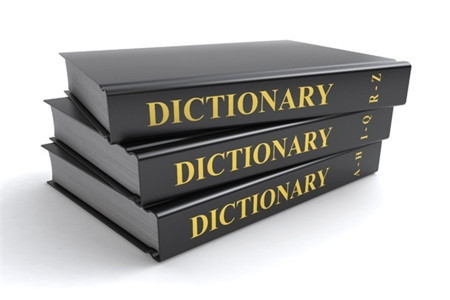2017年6月25日托福考试真题回忆之托福阅读
- 2017年06月25日16:23 来源:小站教育作者:小站托福编辑
- 参与(6) 阅读(5747)
2017年托福考试刚刚结束,参加考试的同学考得怎么样呢?这里小站教育为大家整理了完整的2017年6月25日托福考试阅读部分完整的真题回忆,快来拿走吧。无论复习还是考后整理答案都很有帮助。快来一起看看吧。细心的同学可能会发现,回忆里有4篇文章,那么恭喜大家猜对了,你可能遇到了加试。
2017年6月25日托福考试真题回忆完整版>>>http://toefl.zhan.com/tfziliao56719.html
2017年6月25日 托福阅读考题回忆
Passage One
学科分类:Economy
题目: England’s Economy in sixteenth century
文章原题:
England’s Economy in sixteenth century
In the last half of the sixteenth century England emerged as a commercial and manufacturing power in Europe due to a combination of demographic, agricultural and industrial factors. The population of England and Wales grew rapidly from about 2.5 million in the 1520s to more than 3.5 million in 1580, reaching about 4.5 million in 1610. Reduced mortality rates and increased fertility, the latter probably generated by expanding work opportunities in manufacturing and farming (leading to earlier marriage and more children), explained this rapid rise in population. While epidemics and plague occasionally took their toll, the people in England still suffered less than did those in continental Europe. furthermore, the country had been pulled out of the war that occurred in France and central Europe during the same period. England provides the prominent example of the expansion of agricultural production well before the general European agricultural revolution of the eighteenth and nineteenth centuries. A larger population stimulated the increased woollen through crop civilization. English agriculture became more efficient and market-oriented than almost anywhere else on the continent. Between 1450 and 1640 the yield of grain per acre increased by at least thirty percent. In sharp contrast with farming in Spain, English land owners brought more dense marshes and woodlands into cultivation.
The great land estates of the English society largely remained intact and many wealthy land owners aggressively increased the size of their holdings, a precondition for increased productivity. Marriages between the children of landowners also increased the size of land estates. Primogeniture (the full inheritance of land by the eldest son) helped prevent land from being subdivided. Younger sons of independent land owners left the family and went to find other respective locations. Larger farms contributed more to commercialized farming at the time when an expanding population pushed up demand and prices. Farmland owners turned part of their land into pasture land for sheep in order to adapt to developing woollen trade.
Some of the great land owners as well as Yeomen (farmers whose holdings and security of land tenure guaranteed their prosperity and status), organized their holdings in the interest efficiency. Many farmers selected crops for sales in growing London market. In their quest for greater profits, many land owners put their squeeze on their tenants. Between 1580 and 1620 land lords raised rents and altered conditions of land tenure in their favor, preferring shorter phases and forcing tenants to pay an entry fee before agreeing to rent them land. Landlords evicted those who could not afford annual, more onerous terms. But they also pushed tenants toward more productive farming methods, including crop rotation. England's exceptional economic development also drew the country's natural resources, including iron, timber, and coal, extracted in far greater quantity than elsewhere in the continent. New industrial development expanded the production of iron and pewter in and around the city of Birmingham.
But above all textile manufacturing transformed English economy. Woolens, which accounted for eighty percent of the exports, worsteds (sturdy yarn spun from combed wool fibers), and other cloth found eager buyers in England as well as in the continent. Moreover, late in the sixteenth century as English merchants began making forays across the Atlantic these textiles were also sold in the Americas. Cloth manufacturers undercut production by urban craftspeople by "putting out" work to the villages and farms of the countryside. In such domestic industry poor rural women could spin and make cading (combing fibers in preparation for spin) in their homes.
The English textile trade was closely tied to Antwerp, in the Spanish Netherlands, where workers dyed English cloth. The entrepreneur Sir Thomas Gresham became England's representative there. He so enhanced the reputation of English business in that region that English merchants could operate on credit---the most prominent achievement for sixteenth century. He also advised the government to explore the economic possibilities of Americas, which led to the first concerted efforts at colonization, undertaken with commercial profits in mind.
Paragraph 1
In the last half of the sixteenth century England emerged as a commercial and manufacturing power in Europe due to a combination of demographic, agricultural and industrial factors. The population of England and Wales grew rapidly from about 2.5 million in the 1520s to more than 3.5 million in 1580, reaching about 4.5 million in 1610. Reduced mortality rates and increased fertility, the latter probably generated by expanding work opportunities in manufacturing and farming (leading to earlier marriage and more children), explained this rapid rise in population. While epidemics and plague occasionally took their toll, the people in England still suffered less than did those in continental Europe. Furthermore, the country had been pulled out of the war that occurred in France and central Europe during the same period.
1. The word "generated" in the passage is closest in meaning to
¡ Produced
¡ Strengthened
¡ followed
¡ dominated
2. The word "furthermore" in the passage is closest in meaning to
¡ however
¡ in addition
¡ similarly
¡ in general
3. All of the following are mentioned in Paragraph 1 as developments that led to England's emergence as a commercial and manufacturing power EXCEPT
¡ rapid population growth
¡ an increase in the number of jobs
¡ a trend toward earlier marriages
¡ an end to epidemics and a plague
Paragraph 2
England provides the prominent example of the expansion of agricultural production well before the general European agricultural revolution of the eighteenth and nineteenth centuries. A larger population stimulated the increased woollen through crop civilization. English agriculture became more efficient and market-oriented than almost anywhere else on the continent. Between 1450 and 1640 the yield of grain per acre increased by at least thirty percent. In sharp contrast with farming in Spain, English land owners brought more dense marshes and woodlands into cultivation.
4. Why does the author mention that “English land owners brought more dense marshes and woodlands into cultivation” ?
¡ To give an example of a way in which the English increased agricultural production
¡ To emphasize the influence of English agriculture on the agriculture of other European countries
¡ To emphasize that Spanish agriculture needed to improve their farming methods
¡ To discuss an intended consequence of crop specialization
Paragraph 3
The great land estates of the English society largely remained intact and many wealthy land owners aggressively increased the size of their holdings, a precondition for increased productivity. Marriages between the children of landowners also increased the size of land estates. Primogeniture (the full inheritance of land by the eldest son) helped prevent land from being subdivided. Younger sons of independent land owners left the family and went to find other respective locations. Larger farms were conducive more to commercialized farming at the time when an expanding population pushed up demand and prices. Farmland owners turned part of their land into pasture land for sheep in order to adapt to developing woollen trade.
5. The phrase "conducive to" in the passage is closest in meaning to
¡ a result of
¡ favorable to
¡ able to
¡ expanded to
6. According to paragraph 3 why did wealthy land owners increase the size of the land they owned?
¡ To avoid the necessity of arranged marriages between their children and the children of other land owners
¡ To ensure that there were enough land to divide between their older and younger sons
¡ To increase the number of goods that their farms produced
¡ To provide more jobs for members of the colony
7. Why does the author mention that farmland owners turned part of their land into pasture land for sheep?
¡ To explain why the younger sons of land owners had to leave the family land and find other jobs
¡ To provide an example of a way in which large farms were eager to improve their business
¡ To explain how the practice of primogeniture worked
¡ To describe a strategy land owners used to give their lands from being subdivided.
Paragraph 4
Some of the great land owners as well as Yeomen (farmers whose holdings and security of land tenure guaranteed their prosperity and status), organized their holdings in the interest efficiency. Many farmers selected crops for sales in growing London market. In their quest for greater profits, many land owners put their squeeze on their tenants. Between 1580 and 1620 land lords raised rents and altered conditions of land tenure in their favor, preferring shorter phases and forcing tenants to pay an entry fee before agreeing to rent them land. Landlords evicted those who could not afford annual, more onerous terms. But they also pushed tenants toward more productive farming methods, including crop rotation.
8. The word "quest" in the passage is closest in meaning to
¡ organization
¡ exchange
¡ search
¡ argument
9. Which of the following is NOT mentioned in paragraph 4 as a way that English landlords tried to increase the efficiency of their farms?
¡ encouraging the use of methods as crop rotation
¡ selecting crops on the basis of demand in the London market
¡ increasing rents and reducing the length of phases
¡ hiring Yeomen to work on their farms instead of relying on tenants
Paragraph 5
England's exceptional economic development also drew the country's natural resources, including iron, timber, and coal, extracted in far greater quantity than elsewhere in the continent. New industrial development expanded the production of iron and pewter in and around the city of Birmingham.
10. The word "exceptional " in the passage is closest in meaning to
¡ predictable
¡ initial
¡ complex
Paragraph 6
But above all textile manufacturing transformed English economy. Woolens, which accounted for eighty percent of the exports, worsteds (sturdy yarn spun from combed wool fibers), and other cloth found eager buyers in England as well as in the continent. Moreover, late in the sixteenth century as English merchants began making forays across the Atlantic these textiles were also sold in the Americas. Cloth manufacturers undercut production by urban craftspeople by "putting out" work to the villages and farms of the countryside. In such domestic industry poor rural women could spin and make cading (combing fibers in preparation for spin) in their homes.
11. Select TWO answer choices that according to paragraph 6 indicate changes that occurred in the English economy.
To receive credit you must select two answer choices.
¡ The textile trade products became more profitable than manufacturing them.
¡ Local sales of textile products increased by eighty percent.
¡ English textile merchants expanded their markets inside and outside England.
¡ Part of English cloth manufacturing moved to rural areas.
Paragraph 7
The English textile trade was closely dyed to Antwerp, in the Spanish Netherlands, where workers died English cloth. ■The entrepreneur Sir Thomas Gresham became England's representative there. ■ He so enhanced the reputation of English business in that region that English merchants could operate on credit---the most prominent achievement for sixteenth century. ■ He also advised the government to explore the economic possibilities of Americas, which led to the first concerted efforts at colonization, undertaken with commercial profits in mind. ■
12. Which of the following statements about merchants during the sixteenth century can be inferred from the information in paragraph 7?
¡ Most merchant activity at this time was controlled by Spain.
¡ The textile market was less profitable for merchants than were other areas of trade.
¡ Merchants from different countries in Europe rarely operated in the same regions.
¡ During this period most European merchants did not operate on credit.
13. Look at the four squares [■ ] that indicate where the following sentence can be added to the passage.
In addition to this achievement in Antwerp, Gresham convinced the government at home in England to authorize actions that would make trading in the rest of Europe even more profitable for English merchants.
Where would the sentence best fit?
14. Directions: An introductory sentence for a brief summary of the passage is provided below. Complete the summary by selecting the THREE answer choices that express the most important ideas in the passage. Some answer choices do not belong in the summary because they express ideas that are not presented in the passage or are minor ideas in the passage. This question is worth 2 points.
In the last half of sixteenth century England emerged as a commercial and manufacturing power in Europe.
●
●
●
Answer Choices
1. It is somewhat surprising that England was able to expand its economy during the sixteenth century because its neighbors were involved in many wars during this period.
2. In order to make more money England nobles acquired more land, pushed for more efficient farming methods, and introduced new land tenure conditions.
3. Two England's economic strengths are its use of natural resources, and its textile manufacturing, which found increased markets at home as well in Europe and in the Americas.
4. England experienced an agricultural revolution much earlier than the rest of Europe and agriculture became more efficient and market-oriented.
5. Many of the changes that land owners made to land renting rules not only made their lands more profitable but also made a life for their peasants.
6. Though he was a successful ambassador to the Spanish Netherlands, Thomas Gresham was unable to convince the English government to start colonies in America.
答案:A、B、D、A、B、 C、B、C、D、C、CD、D、C、BCD
Passage Two
学科分类:Biology
题目:蝴蝶翅膀的作用
内容回忆:
蝴蝶的翅膀可以用来帮助它们躲避捕食者的捕猎。主要有三种形式:伪装色,警告色以及恐吓色。
第一段引出了蝴蝶翅膀的纹路有三种形式来影响捕食者,特别是通过视觉来捕猎的动物。
第二段详细介绍了伪装色的作用,举例说明了蝴蝶翅膀会伪装成周围树林、水流等颜色。
第三段详细介绍了警告色的使用,有些蝴蝶翅膀的样式会告诉捕食者自己的不可食用性。
第四段详细介绍了恐吓色的作用,大多以眼睛的样式展现,告诉捕食者该物种的体型等,产生错觉。
第五段进一步阐述了恐吓色的应用。
词汇题:
1. virtually = almost completely
2. startled = surprised
3. disrupt = disturb
4. rudimentary = simple
Passage Three
学科分类:Biology
题目:松树和火灾防御
内容回忆:
一种松树会自动脱落靠地面比较近的树枝。因为这些树的树叶中饱含着树枝resin,在火灾爆发时,火很容易从地面通过这些靠近地面的树枝,顺着燃烧,引燃整棵树。所以为了避免这种情况,树木会自动脱落靠近地面的树枝。
在森林火灾发生之后,这种树比起其它树也能更快地从火灾中恢复过来。这种树在树龄很小的时候就可以开始繁殖,而在火灾后的一段时间里,会不断的繁殖。因为不知道下一场火灾什么时候会发生。
这种松树的树皮也也能帮助规避火灾带来的伤害,因为树皮很松,火一烧树皮就会自动脱落,这样火就不能顺着树皮往上燃烧。
这种树的种子非常的坚硬,只有红松鼠会以它的种子为食,但是红松鼠也不是特别喜欢吃,因为太坚硬了。种子能够忍受很高的温度,并能够长时间地保存,在适宜的时候发芽。
以上就是小站教育为大家整理了2017年6月25日托福考试阅读真题回忆,希望对大家考后预测分数及准备考试的同学备考有帮助。




































